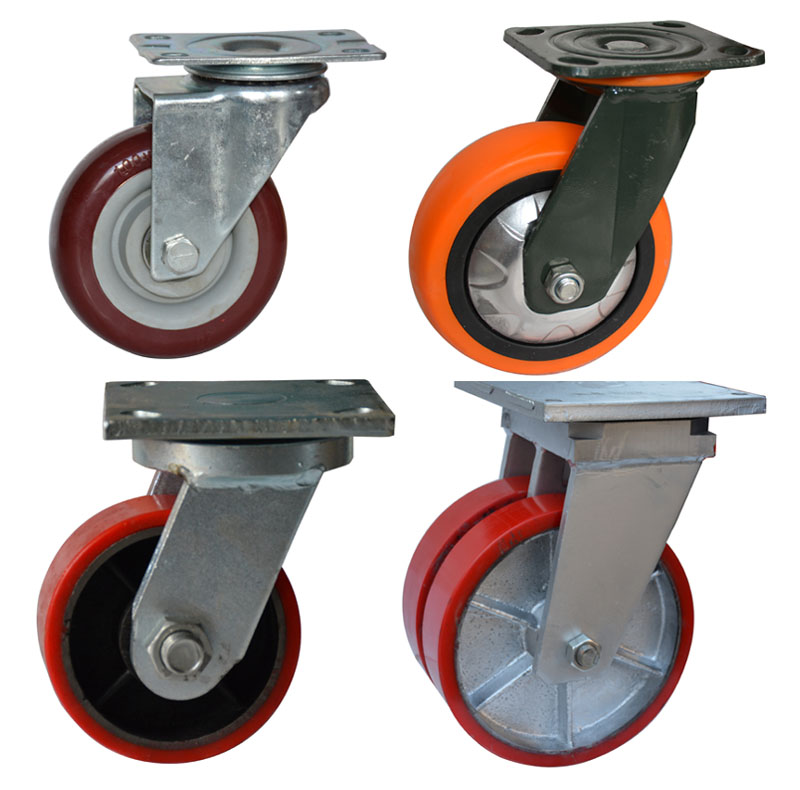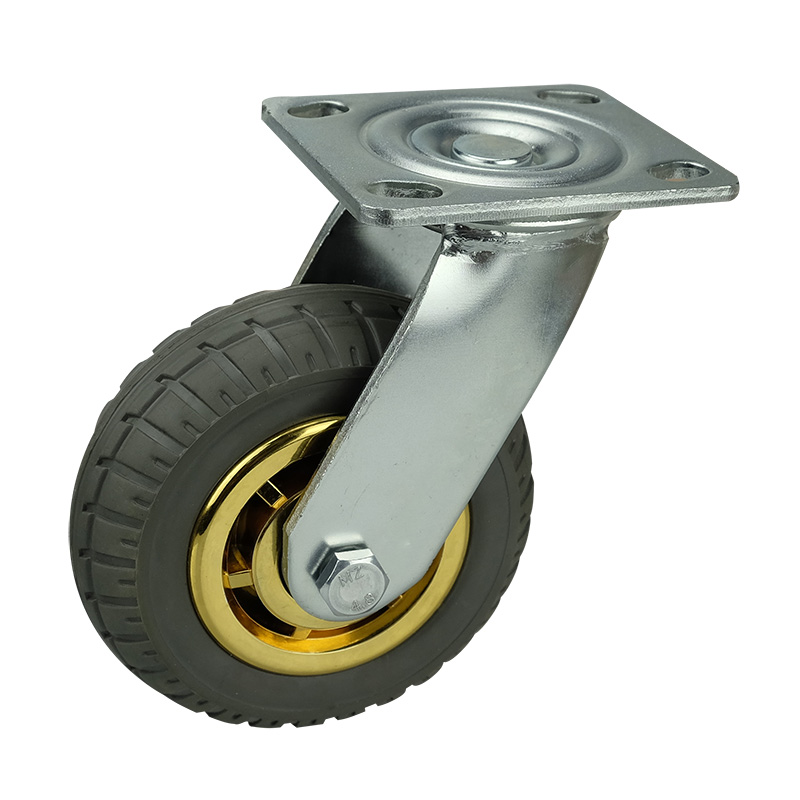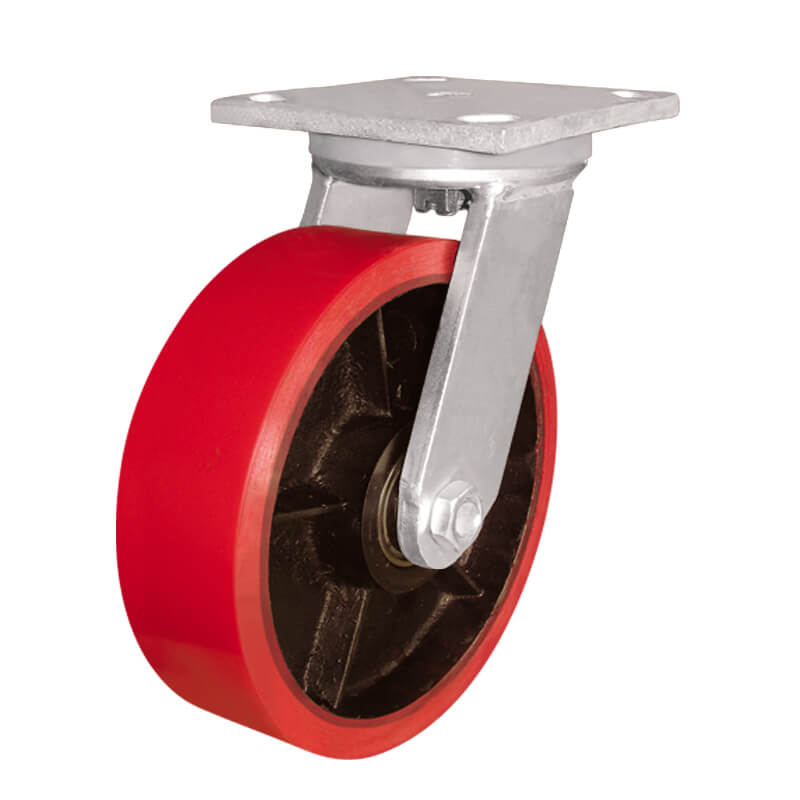Industrial tools are an integral part of our daily lives. They have found their place in the operation of many of our most common devices and have become essential in many ways. These tools are logically booming around the world. Small or large, often going unnoticed, they are nevertheless necessary in the movement of several loads. Among these tools, there are of course the wheels. We do not always measure their importance, being very used to their presence. Whether moving furniture, handling equipment, or various other loads, industrial wheels play an essential role. A tour in the universe of these precious tools allows us to discover their constitution, the delicacy of their use, and all the interest they can arouse for the most initiated. Events organized for this purpose bring together manufacturers and followers in different places around the world.
Contents
- 1 What are industrial wheels?
- 2 What are the wheels and casters?
- 3 Different types of wheels
- 4 Useful, but delicate.
- 4.1 Load to be carried
- 4.2 The temperature and the environment
- 4.3 The soil
- 4.4 Wheel maintenance
- 5 Booming industrial tools
- 6 Industrial wheels, tools for the future?
What are industrial wheels?
 If you have already used a trolley to store your purchases at the supermarket, you have already benefited from these industrial tools which have made your movement easier. They are present, mounted on various devices that we use in everyday life. In the automotive, railway, or simply in our offices with our furniture, their mission is to facilitate the movement of loads. These are circular parts, existing in several models depending on the constitution and operation. In general, there are several constituent elements: the tire, the hub, the rim, the axle. The bandage is a circular layer, fixed around the rim, and which is in direct contact with the ground. It constitutes an important part which will determine the use which will be made of the wheel, according to the characteristics of the ground. A wheel rotates around an axis. To perform this movement, it needs an element, the hub, located in the center. A wheel can wear out over time, hence the need to make proper use of it, under the conditions mentioned by the manufacturer.
If you have already used a trolley to store your purchases at the supermarket, you have already benefited from these industrial tools which have made your movement easier. They are present, mounted on various devices that we use in everyday life. In the automotive, railway, or simply in our offices with our furniture, their mission is to facilitate the movement of loads. These are circular parts, existing in several models depending on the constitution and operation. In general, there are several constituent elements: the tire, the hub, the rim, the axle. The bandage is a circular layer, fixed around the rim, and which is in direct contact with the ground. It constitutes an important part which will determine the use which will be made of the wheel, according to the characteristics of the ground. A wheel rotates around an axis. To perform this movement, it needs an element, the hub, located in the center. A wheel can wear out over time, hence the need to make proper use of it, under the conditions mentioned by the manufacturer.
Wheels and castors, what are the differences?
 The two terms are often used in the same contexts and can be confusing. Although not synonymous, one is related to the other. Indeed, a wheel is a constituent part of a roulette. A wheel placed in a yoke gives a roulette. A yoke can be rotatable and allow rotational movements thanks to a pivoting plate. We talk about swivel roulette. On the other hand, when it is rigid, it only allows movements in a straight line. These are then fixed casters.
The two terms are often used in the same contexts and can be confusing. Although not synonymous, one is related to the other. Indeed, a wheel is a constituent part of a roulette. A wheel placed in a yoke gives a roulette. A yoke can be rotatable and allow rotational movements thanks to a pivoting plate. We talk about swivel roulette. On the other hand, when it is rigid, it only allows movements in a straight line. These are then fixed casters.
Different types of wheels
Depending on the use that will be made of it, and the suitability with the ground for proper operation, we can distinguish several types of wheels according to several constituent materials, and with different colors. The load to be carried and the resistance are also essential elements which make it possible to differentiate the wheels and guide a buyer in the choice of the appropriate wheel. Some are more suitable for light loads, others are recommended for medium and heavy loads. Depending on the type of wheel and tire, we can distinguish wheels by:
- pneumatic,
- rubber,
- polyurethane,
- melting,
- polyamide or polypropylene,
- vulkollan,
- santoprene, etc.
Useful, but delicate.
If the usefulness of industrial wheels is no longer to be demonstrated, it is all the same important to specify that it is advisable to make a suitable use of them. Care must be taken to limit any malfunctions that may arise during use. The usage information mentioned by the manufacturer must be observed. Not every wheel is designed to work everywhere and in all contexts. Different elements determine the correct use of a wheel.
Load to bear
The wheels are designed with precise functionality. In terms of load, some are more suitable for heavy loads, others for light ones. It is therefore necessary to stick to the maximum load capacity mentioned by the manufacturer. To go beyond the indications by overloading would be to expose the wheels to certain malfunctions.
Temperature and environment
Each wheel has a resistance margin if it is used in optimal conditions. The temperature is also a factor that comes into play in the use of the wheels and which plays on their resistance. It must not exceed the margin provided. Care should also be taken not to expose the wheel to chemicals which could also damage it. The humidity of the environment, possible contact with corrosive agents, are all elements to take into account.
Floor
The surface on which the wheel is used is a factor which undeniably intervenes. A wheel used on soil for which it was not designed is liable to be damaged. A soil with the irregularities pronounced and ground smooth requires different features of a wheel. It is necessary to limit the shocks which can be harmful. Speed also comes into play here. Complying with the standards indicated by the manufacturer is essential.
Wheel maintenance
However, malfunctions can occur during use. The wheels can be blocked, damaged. However, the user is not authorized to make modifications at his pleasure without referring to the manufacturer. For cleaning the wheels, any type of detergent does not do the trick. Of non-corrosive products are indicated. The long-term efficiency of your wheels depends on how well you maintain them.
Industrial tools booming
Events in 2019 are to be revisited on industrial advances in the world. Several opportunities are initiated to allow the various actors in the field of industrial tools to meet, exchange for sharing knowledge, and initiate future partnerships. As technology is evolving all over the world, such opportunities are attractive to different stakeholders. Visitors also find their account there, being able to find in one place several manufacturers of these tools and devices that are part of their daily life.
The 2019 edition of the CeMAT ASIA Asian Logistics Exhibition under the theme of “Smart Logistics” was closed on October 26, 2019 at the Shanghai New International Center. It is an annual opportunity to exhibit innovations in the field of industrial creations. The strong growth in attendance around this edition demonstrated an interest in these areas of logistics and transport systems. The Mecspe Bari was also held in Italy around themes related to this area. And what about Machtech Egypt? This was once again an exhibition fair where manufacturers of industrial tools met to discuss their common domain. Enriching and sharing moments furnished this event. We could also cite the Logimat, which was held in Stuttgart, with the participation of several exhibitors from all over the world. It was the 17 the International Exhibition of intralogistics solutions and process management. Telltale Rota, participating in all these prestigious events, is a large manufacturer of industrial wheels. The company has a wide range of industrial casters for all tastes and needs.
Industrial wheels, tools for the future?
Made at the very beginning of their appearance with wood, they have evolved over the years to reach the versions that we can see today. They have imposed themselves in several sectors, making life easier and human functioning. Designers are constantly thinking about making wheels that are more and more adapted to needs. In a world where the motorization of life is constantly improving, industrial wheels are essential tools for the future. Whether in the automobile or handling, we cannot do without them. Unless there is a major technical and technological revolution, the industrial wheels will continue to make their way into the daily life of modern man, who understands the need to save time and energy in his travels. They are therefore real tools for the future and we would benefit from investing in them.
How to choose your industrial wheels and casters?
 The choice of industrial wheels and casters is generally not given great importance. However, this equipment is essential for the proper functioning of “furniture”, as well as for safety in the workplace.
The choice of industrial wheels and casters is generally not given great importance. However, this equipment is essential for the proper functioning of “furniture”, as well as for safety in the workplace.
The different types of industrial wheels and casters
Whether furniture or trolleys, they are purchased with casters adapted to their use. But there will come a time when you have to replace them because of wear or because the environment of use has changed. Right now, how do you choose the right model? First of all, be aware that there are different types of industrial wheels and casters. There are for example different types of yoke: swivel, fixed without swivel and swivel with brake.
The yoke can be fitted with a plate fixing, eye fixing (central hole), or fixing with threaded rod. Also note that the industrial wheel is composed of a rim, a bearing or hub, and a tire. Again, there are roller, ball or plain bearings, and tires with different coatings such as synthetic rubber, pneumatics, and polyurethane. Each material and each production is suitable for a type of use and a particular environment.
Industrial wheels from a real professional supplier
You now understand that choosing industrial wheels or casters is not given. And we will see then that there are several criteria to take into account. A true professional will be able to advise you on choosing the wheels, casters, and mounts suited to your needs. He will have the necessary expertise with the operation of industrial wheels, but also concerning occupational safety. You can even take advantage of its know-how to train your teams and optimize your work environment.
There are many excellent caster suppliers, like Yutong in China, which offers advantages like quality, service, and price. Hengshui Yutong Metalwork Co., Ltd. is a China wheel manufacturer with nearly 20 years of professional experience. With its superb technology, high-quality products, and perfect after-sales service, it has won the trust of customers. Yutong specializes in the production and export of industrial casters of various specifications. It can provide customers with free samples for testing, furthermore, it can deliver 3-4 days before other businesses in the industry. At the same time, the company provides OEM and ODM services to serve customers worldwide.
The different selection criteria
 As we mentioned before, there are different criteria to take into account when you want to buy industrial wheels. The main factors are the type of soil on which the wheels will run, the load they will have to carry, the intensity of use and the conditions of the working environment. For this last point, we consider the presence of humidity, aggressive chemicals, or very high temperatures. The type of soil particularly influences the choice of tire, but also the rest of the elements such as the bearing.
As we mentioned before, there are different criteria to take into account when you want to buy industrial wheels. The main factors are the type of soil on which the wheels will run, the load they will have to carry, the intensity of use and the conditions of the working environment. For this last point, we consider the presence of humidity, aggressive chemicals, or very high temperatures. The type of soil particularly influences the choice of tire, but also the rest of the elements such as the bearing.
Smooth floors, for example, require a hard polyamide or polypropylene bandage to ensure good performance in terms of load capacity. For exterior floors which are generally unpaved or irregular, a pneumatic or elastic rubber tire is preferred. It will also be necessary to take into account the load capacity, the comfort of use, and the degree of noise pollution to name a few characteristics.
With the support of your experienced supplier, you will surely be able to choose the industrial wheels that best suit your performance and safety needs.
At this point, there is no need to stress the importance of the wheel, whose applications since its appearance more than 5,000 years ago until today, have brought us multiple benefits.
Our needs for displacement and/or movement both at a private and industrial level (machinery, furniture, etc.), have led to extensive development in the field of industrial wheels, as well as in other applications such as wheels for furniture, highlighting the wheels trundle and other auxiliary furniture.
They are thus circular elements that rotate on an axis, allowing transport by rolling, which reduces the physical effort necessary for our movements. In the field of industrial hardware and response to your needs, we focus mainly on those indicated above, that is, those that help the development of the daily activity of the industry for the movement of machinery, medium loads, etc. Likewise, we give you solutions for other important day-to-day applications, such as the furniture wheel, a key piece for auxiliary furniture.
To give you a short introduction to the subject, we will start by talking briefly about the characteristics that define them, such as their composition. And so, we must talk about the parts that make them up: the wheel itself (which includes the bearing, the rim and the bearings or bearing elements); the fixed or rotating support (according to the needs of displacement), and that connects the wheel to the trolley; and the axle, which is usually a threaded bolt that connects the wheel to the bracket.
About the materials of which they are composed, one or the other is used depending on several factors, one of them being the temperatures to which they will be subjected, as well as the type of load and the displacement surface. Thus we distinguish between various types of components: the nylon wheel for example withstands temperatures ranging from -30º to + 80º; the gray or black rubber wheel holds less temperature, between -20º and + 60º. Something similar occurs with injected polyurethane, which can withstand a higher maximum temperature than molten polyurethane (up to + 80º the first, and + 60º the second). The steel wheels and those made of phenolic resins are the materials that withstand the lowest temperature down to -40º, and high between + 250º and + 300º.






